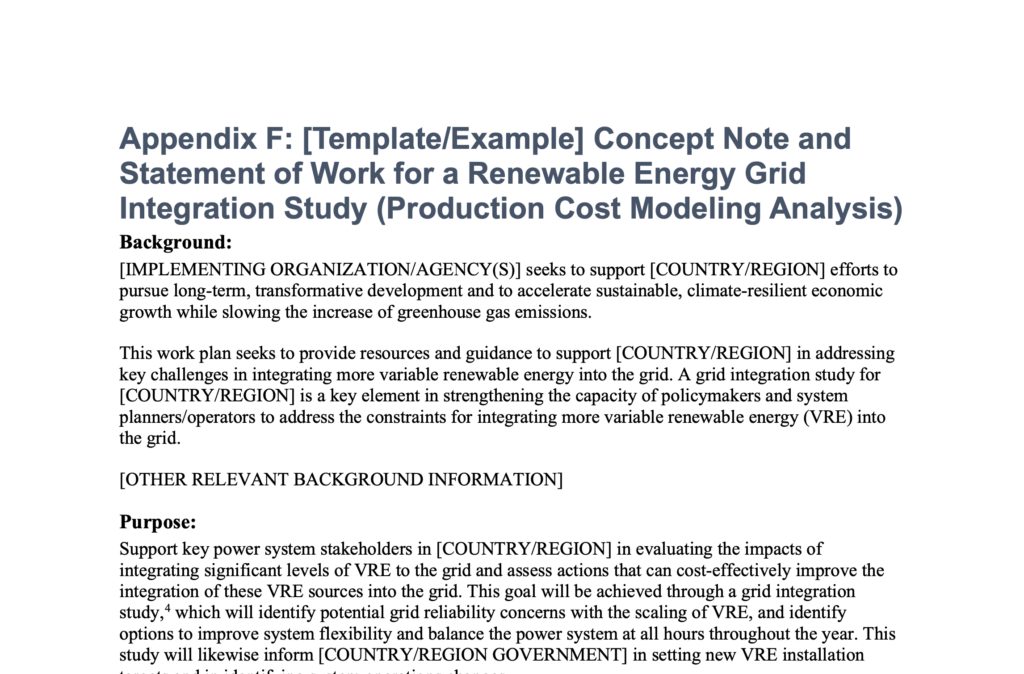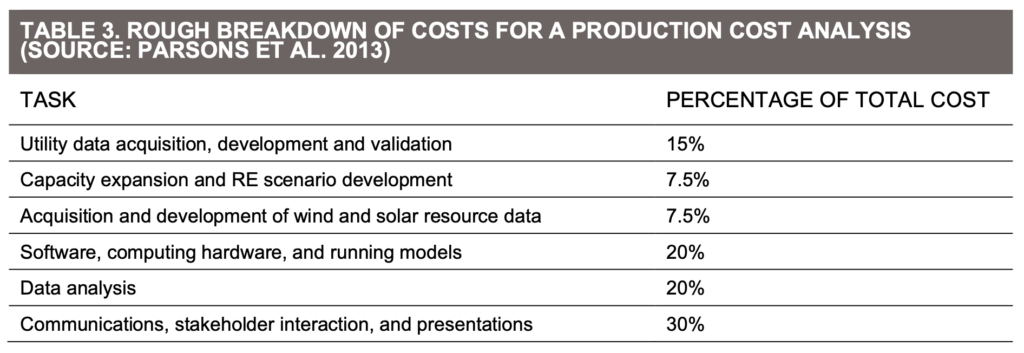A brief concept note or proposal outlining your grid integration study – and its objectives, needs and possible gaps – can be a powerful tool to refine your study and build the support and participation of important stakeholders and decision makers.
The thinking, research and consultation you accomplished in the steps above should give you most (if not all) of what you need to draft an effective grid integration study concept.
Main Points
- The purpose of the concept note is to secure buy-in from key stakeholders – including decision makers, potential TRC members, and project funders – on whether and how to proceed with the proposed grid integration study.
- A concept note should include relevant background and objectives, expected outputs and benefits, and the geographic focus for your study. But you should expect your concept note to evolve as you receive stakeholder input.
Use This Template to Draft Your Concept Note
The National Renewable Energy Laboratory has created a template for effective grid integration study concept notes. Use it to draft your own.

Read Excerpt: Pages 57-58 of Variable Renewable Energy Grid Integration Studies Guide: A Guidebook for Practitioners by NREL.
Use this Table to Estimate Costs for Your Study
Some parts of conducting your grid integration study will be more costly than others.

Read Excerpt: Table 3 on page 34 of Variable Renewable Energy Grid Integration Studies Guide: A Guidebook for Practitioners by NREL.
Suggested Actions & Next Steps
- Use the information and insights you gathered in step 3.1, step 3.2 and step 3.3, and NREL’s template (above), to draft a concept note.
- Share the concept note with the stakeholders and decision makers you have identified for your TRC to gather their input and buy-in. Revise your concept based on their feedback.
- Circulate your revised concept note to key decision makers within the TRC, and discuss whether and how to proceed with the study.
- Identify the major costs based on the scope of the study, extent of stakeholder engagement, data availability, and level of capacity building needed to develop modeling expertise. Use the table above as an example.

